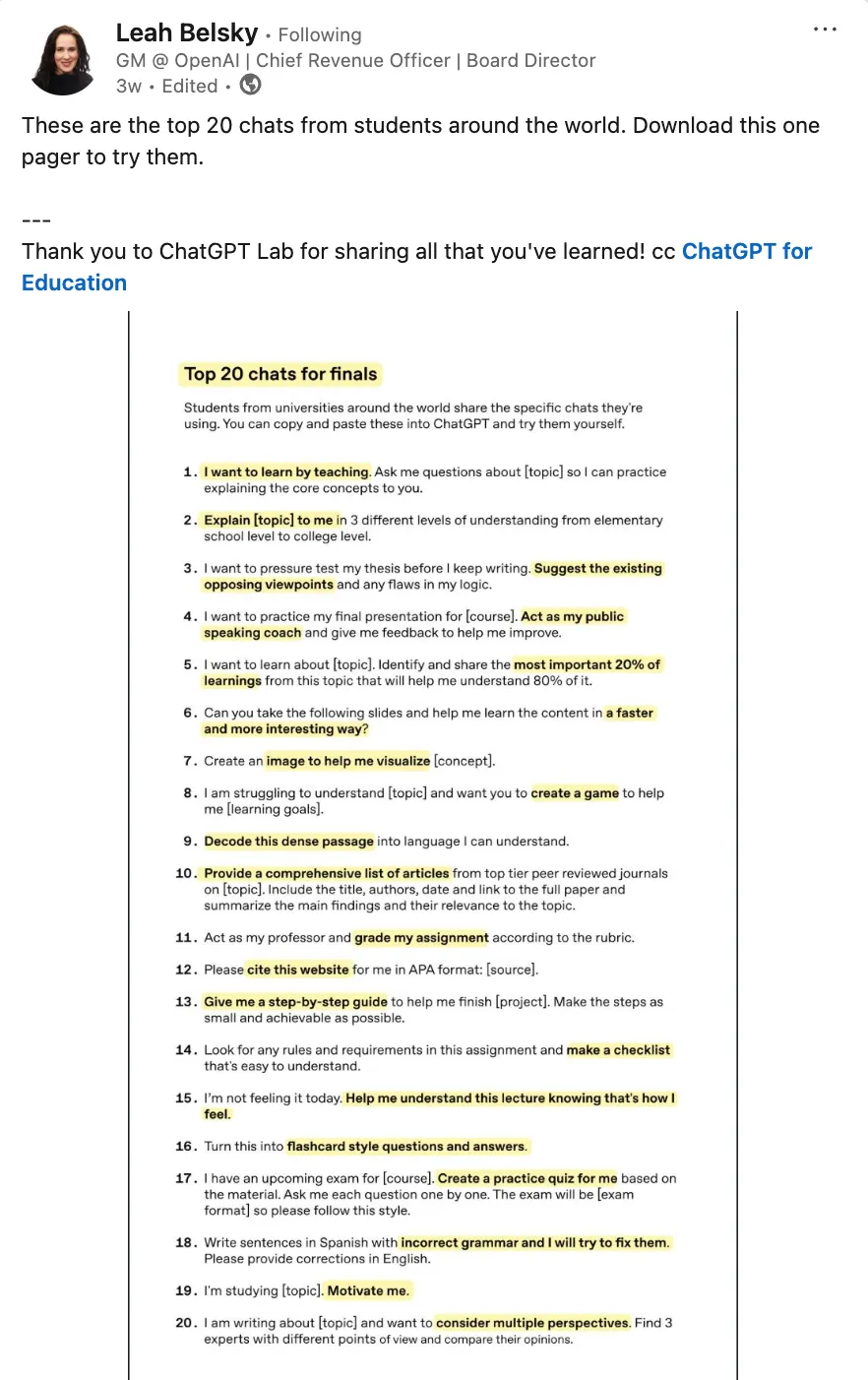Learner AI usage is essentially a real-time audit of our design decisions

First off, it’s worth saying that this looks and reads like a lightly-edited AI-generated newsletter, which it is. Nonetheless, given that it’s about the use of generative AI in university courses, it doesn’t feel inappropriate.
The main thrust of the argument is that students are using tools such as ChatGPT to help break down courses in ways that should be of either concern or interest to instructional designers. As a starting point, it uses the LinkedIn post in the screenshot above, which is based on OpenAI research and some findings I shared on Thought Shrapnel recently.
I can’t see how this is anything other than a positive thing, as students taking control of their own learning. We’ve all had terrible teachers, who think that because they teach, their students learn. Those who use outdated metaphors, who can’t understand how learners don’t “get it”, etc. For as long as we have the current teaching, learning, and assessment models in formal education, this feels like a useful way to hack the system.
Picture this: a learner on a course you designed opens their laptop and types into ChatGPT: “I want to learn by teaching. Ask me questions about calculus so I can practice explaining the core concepts to you.”
In essence, this learner has just become an instructional designer—identifying a gap in the learning experience and redesigning it using evidence-based pedagogical strategies.
This isn’t cheating—it’s actually something profound: a learner actively applying the protégé effect, one of the most powerful learning strategies in cognitive science, to redesign and augment an educational experience that, in theory, has been carefully crafted for them.
[…]
The data we are gathering about how our learners are using AI is uncomfortable but essential for our growth as a profession. Learner AI usage is essentially a real-time audit of our design decisions—and the results should concern every instructional designer.
[…]
When learners need AI to “make a checklist that’s easy to understand” from our assignment instructions, it reveals that we’re designing to meet organizational requirements rather than support learner success. We’re optimizing for administrative clarity rather than learning clarity.
[…]
The popularity of prompts like “I’m not feeling it today. Help me understand this lecture knowing that’s how I feel” and “Motivate me” reveals a massive gap in our design thinking. We design as if learning is purely cognitive when research clearly shows emotional state directly impacts cognitive capacity.
Source: Dr Phil’s Newsletter